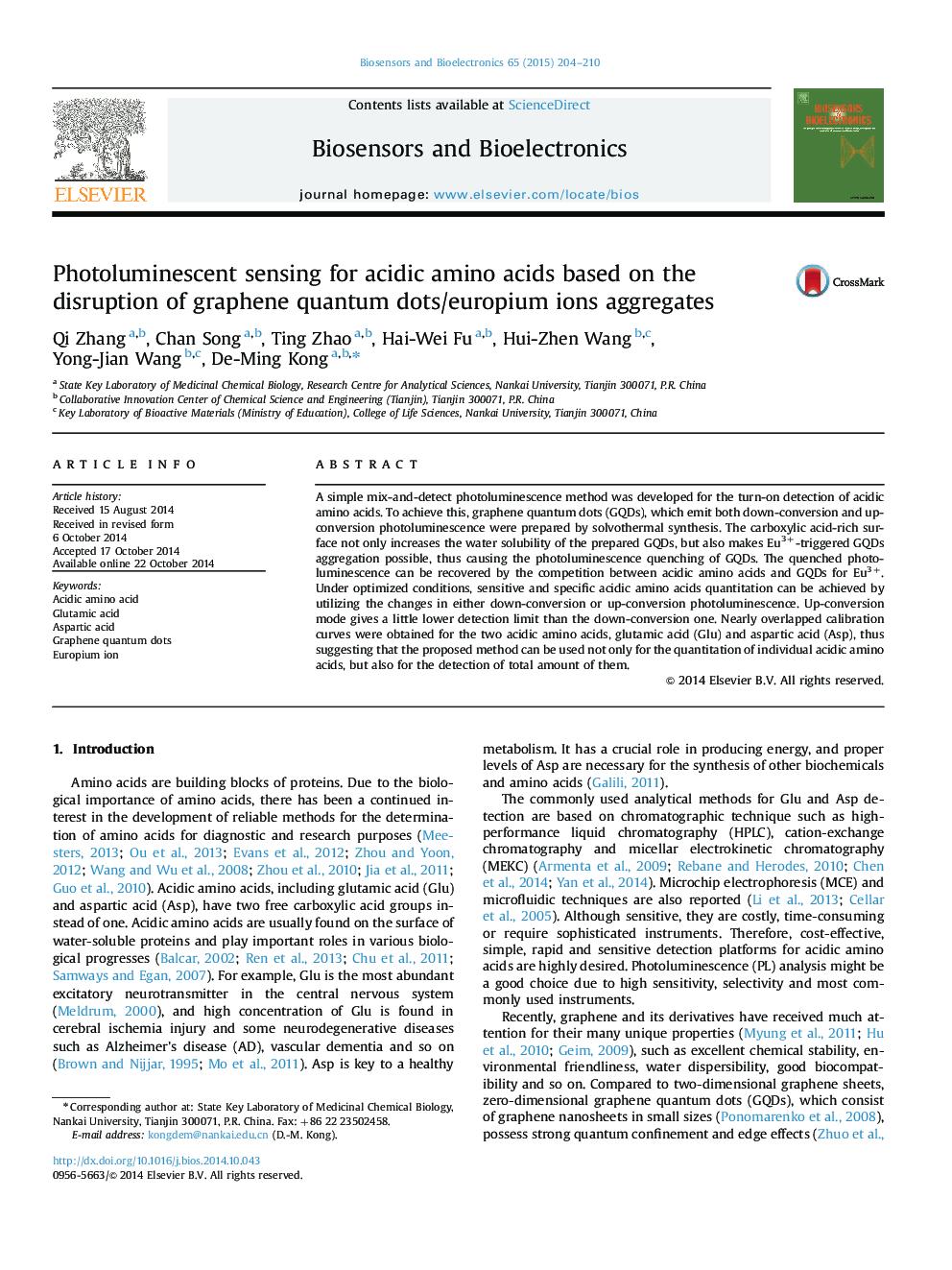| Article ID | Journal | Published Year | Pages | File Type |
|---|---|---|---|---|
| 866374 | Biosensors and Bioelectronics | 2015 | 7 Pages |
•A sensitive and specific sensor is designed for acidic amino acids detection.•The sensor is based on the competition between acidic amino acids and quantum dots for europium ions.•Acidic amino acids quantitation can be achieved by using either down-conversion or up-conversion photoluminescence.•The sensor follows a simple mix-and-detect mode.•Acidic amino acids quantitation can be achieved by using either down-conversion or up-conversion photoluminescence.•The sensor gives nearly identical detection sensitivities for the two acidic amino acids (glutamic acid and aspartic acid).
A simple mix-and-detect photoluminescence method was developed for the turn-on detection of acidic amino acids. To achieve this, graphene quantum dots (GQDs), which emit both down-conversion and up-conversion photoluminescence were prepared by solvothermal synthesis. The carboxylic acid-rich surface not only increases the water solubility of the prepared GQDs, but also makes Eu3+-triggered GQDs aggregation possible, thus causing the photoluminescence quenching of GQDs. The quenched photoluminescence can be recovered by the competition between acidic amino acids and GQDs for Eu3+. Under optimized conditions, sensitive and specific acidic amino acids quantitation can be achieved by utilizing the changes in either down-conversion or up-conversion photoluminescence. Up-conversion mode gives a little lower detection limit than the down-conversion one. Nearly overlapped calibration curves were obtained for the two acidic amino acids, glutamic acid (Glu) and aspartic acid (Asp), thus suggesting that the proposed method can be used not only for the quantitation of individual acidic amino acids, but also for the detection of total amount of them.
